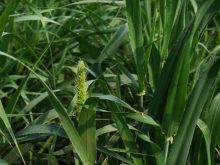Canadian farmers are expected to cut back the summerfallow allocation and put more acres in production this spring, planting more of those acres in oilseeds and fewer in grains and pulses.
Agriculture and Agri-Food Canada’s market analysis group on Monday released an outlook for principal field crops which, assuming a return to average or trend yields across the board, predicts grain and oilseed production to drop three per cent and pulse/special crop production to drop four per cent.
“However, due to higher carry-in stocks, total crop supply is forecast to decrease by only one per cent,” the report said.
Read Also

New opportunities for Canadian goods in Mexico
Agriculture minister’s trip to Mexico sees promotion of Canadian goods like beef and canola, with potential for more partnerships in the future
Canola’s seeded area in Canada is forecast to rise by three per cent, to about 21 million acres, as “returns remain attractive compared to other field crops,” AAFC said. Production is thus forecast to rise “marginally” to 18.5 million tonnes, just under the record of 18.6 million from 2013-14. Total supply is forecast to rise “marginally” with the higher production.
AAFC also forecasts canola prices will ease slightly to the $490-$530 per tonne range, “in line with an expected decline in world palm oil and soy oil prices.”
Soybean planted area, meanwhile, is forecast to rise eight per cent, to a record 5.93 million acres, on “relatively attractive returns compared to alternate crops.”
Given yields closer to the five-year average, soy production would thus rise slightly to a record 6.8 million tonnes. Soy prices are forecast to fall to the $435-$475 per tonne range under pressure from lower U.S. prices.
Wheat acres in Canada for the 2017-18 crop year are forecast to rise four per cent on a six per cent increase in spring wheat area and a 12 per cent decrease in winter wheat acres, due to low carry-in stocks, a shift out of winter wheat and durum, and “increased interest in growing high-yielding varieties,” AAFC said.
Non-durum wheat supply is expected to fall by four per cent, as lower carry-in stocks “compound the fall in production.” Non-durum wheat production is forecast at 23.3 million tonnes, down from 23.967 million in 2016-17.
The average crop-year producer price in Canada for wheat is forecast to rise from 2016-17 levels, AAFC added, on “lower world, U.S. and Canadian supply, and the forecast for a weaker Canadian dollar.”
Durum acres are expected to drop 15 per cent from 2016-17 due to large carry-in stocks, AAFC said. Assuming yields return to the trend line from the record levels seen in 2016-17, durum production is forecast to fall by 25 per cent, to 5.8 million tonnes.
Barley seeded area is forecast to drop three per cent from 2016-17 due to high carry-in stocks; assuming a return to average yields, barley production would fall nine per cent, to eight million tonnes, though total supply would decrease by two per cent.
Total domestic barley use is forecast to increase by one per cent, due to “slightly higher feed use in cattle and hog production,” AAFC said. It also forecasts increased demand in the longer term for malt barley from the “rapidly growing” craft beer industry, which generally uses nearly twice as much barley in its production compared to traditional large-scale commercial producers.
Corn acres in Canada are forecast to slip two per cent from 2016-17, despite forecasts for lower winter wheat area in the East, and given “strong competition” from other cropping choices, particularly soybeans.
Corn production for 2017-18 is thus forecast to decrease three per cent to 12.9 million tonnes, cutting total supply by two per cent despite “near-record” carry-in stocks.
In pulse crops, dry pea acres are expected to slip slightly but remain at a “historically high” level, dry bean acres are expected to remain unchanged and chickpea acres are expected to rise, due to relatively higher returns.
Lentil acres are expected to drop five per cent, but production is seen rising to a record 3.5 million tonnes on a higher yield forecast and overall lentil prices are forecast to rise “sharply.” — AGCanada.com Network












